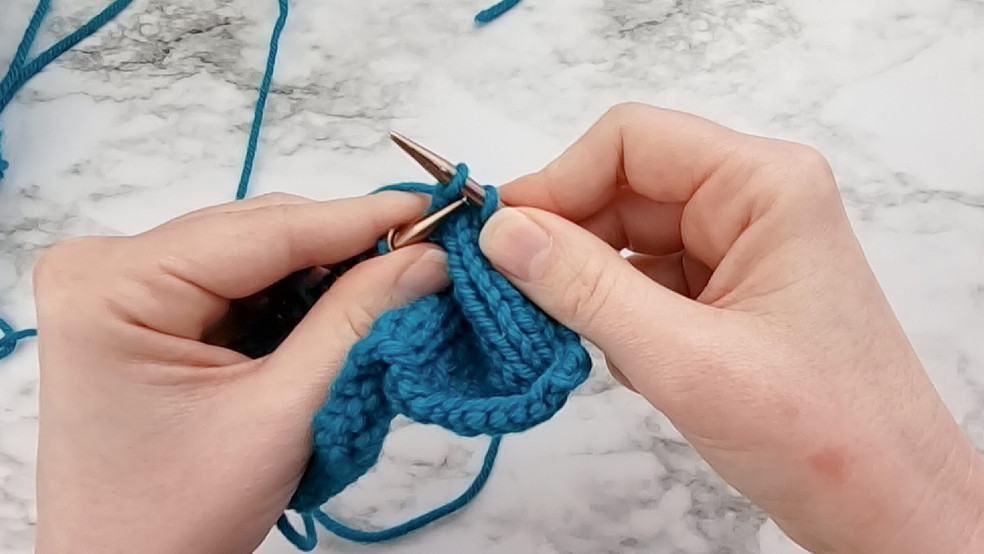Left-Leaning Decreases
- Becca Norman
- Feb 16, 2022
- 3 min read
Updated: Sep 3
You know how to knit two together, but now you need a left-leaning decrease. There are a few different techniques to achieve this, each of which looks slightly different. I'm going to show you three of them, compare them side by side to show you how they differ, and teach you some hacks to make them look even better.
I went a little swatch crazy searching for the fairest and smoothest left-leaning decrease in all the land. On the first swatch, I did the left-leaning decreases to the left of a stitch marker: I knit to a stitch marker, worked two stitches together… knit to a stitch marker, worked two stitches together. I wanted to compare them all both ways because I had a feeling different ones might look better in different situations.

On the second one, I did them where they're aligned on their left side. So when I came to a stitch marker, I knit the two together that were BEFORE the stitch marker. both of these swatches have the same three left-leaning decreases. (There’s one more that I forgot about: skpsso, sometimes also called skp, but I really don’t like it so maybe I forgot it on purpose) This on the right side is a traditional SSK; in the middle is a modified SSK, and on the left is a k2tog tbl. I'll show you how each of those is worked, and then we will go over which one I like better, and when and why.
SSK

SSK means "slip, slip, knit" (slip them knit-wise) and knit them together through the back loop.
Modified SSK

For the modified SSK, which everybody says is so much smoother, you only slip one stitch-knit wise, and then you knit that and the next stitch together through the back loop. This could also be abbreviated as s1k2togtbl but that’s not very short so I don’t know who does that.
K2tog TBL

For the k2tog tbl, which of course stands for "knit two together through the back loop" you don't slip them; you just knit them through the back loop as-is.
The Hack
There is one additional secret that I found made a really big difference in a smoother column of left-leaning decreases. Without it, every other stitch looks a little bit smaller, and it's kind of a crooked line. But when you work the stitch in the next row through the back loop, it makes everything look a lot smoother.

Hack Option 1:
When knitting stockinette flat, you can purl every stitch directly above the decrease through the back loop, and all the rest regularly. Working a stitch through the back loop creates what’s called a “twisted stitch.”
When knitting in the round, knit the stitch above the previously worked decrease through the back loop. This is easier because the decrease is easier to see on the knit side than the purl side, but if you’re using stitch markers to keep track of the decreases, you can use those as a reminder of where to work the twisted stitches.
Hack Option 2:
If you don’t think you’ll remember it on the plain rows (understandable), you can do the work of twisting the stitch right after working the decrease. This will work the same whether you’re working flat or in the round.
To do this, insert your left needle through that stitch on the right needle (the one you just worked) from right to left, slipping it to the left needle, and then back to the right needle again by slipping it purl-wise.
When you do this, you don't need to do anything fancy on the next row. Just knit or purl normally. They'll feel a little bit different because they're already twisted, but it accomplishes the same goal.

And the Winner Is...
Who is the winner of this left-leaning decrease beauty contest? K2tog tbl? Not my favorite. It's not horrible, but I don't love it. It is a lot better with the twisted-stitch-on-the-off-rows-trick than without.
It was harder for me to decide between the others. They’re pretty similar, but in the end, I prefer the regular ol’ SSK. What made the biggest difference was twisting the stitch in the following row.
What’s your favorite? Leave me a comment here or send me a DM on IG! @becca.j.norman





